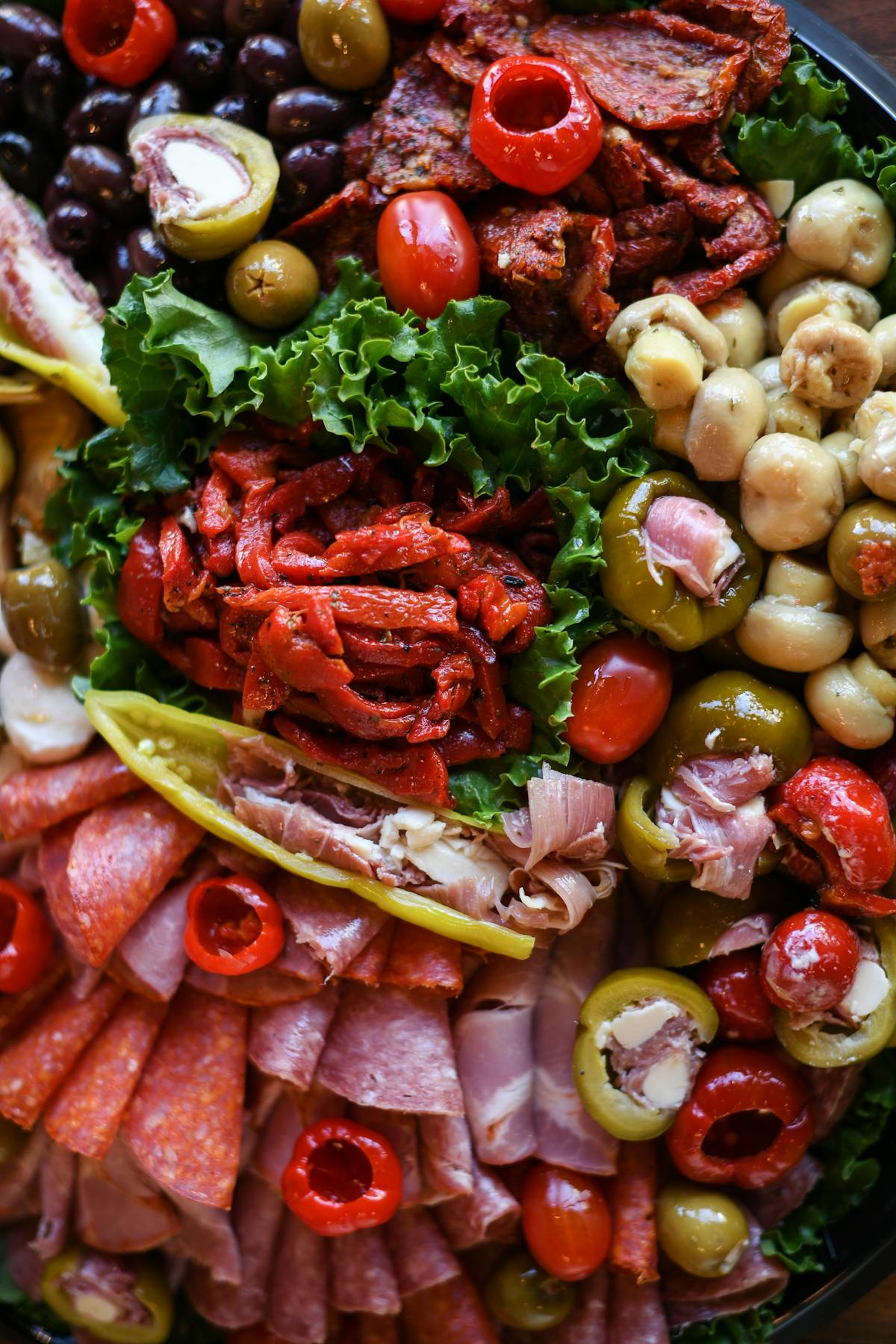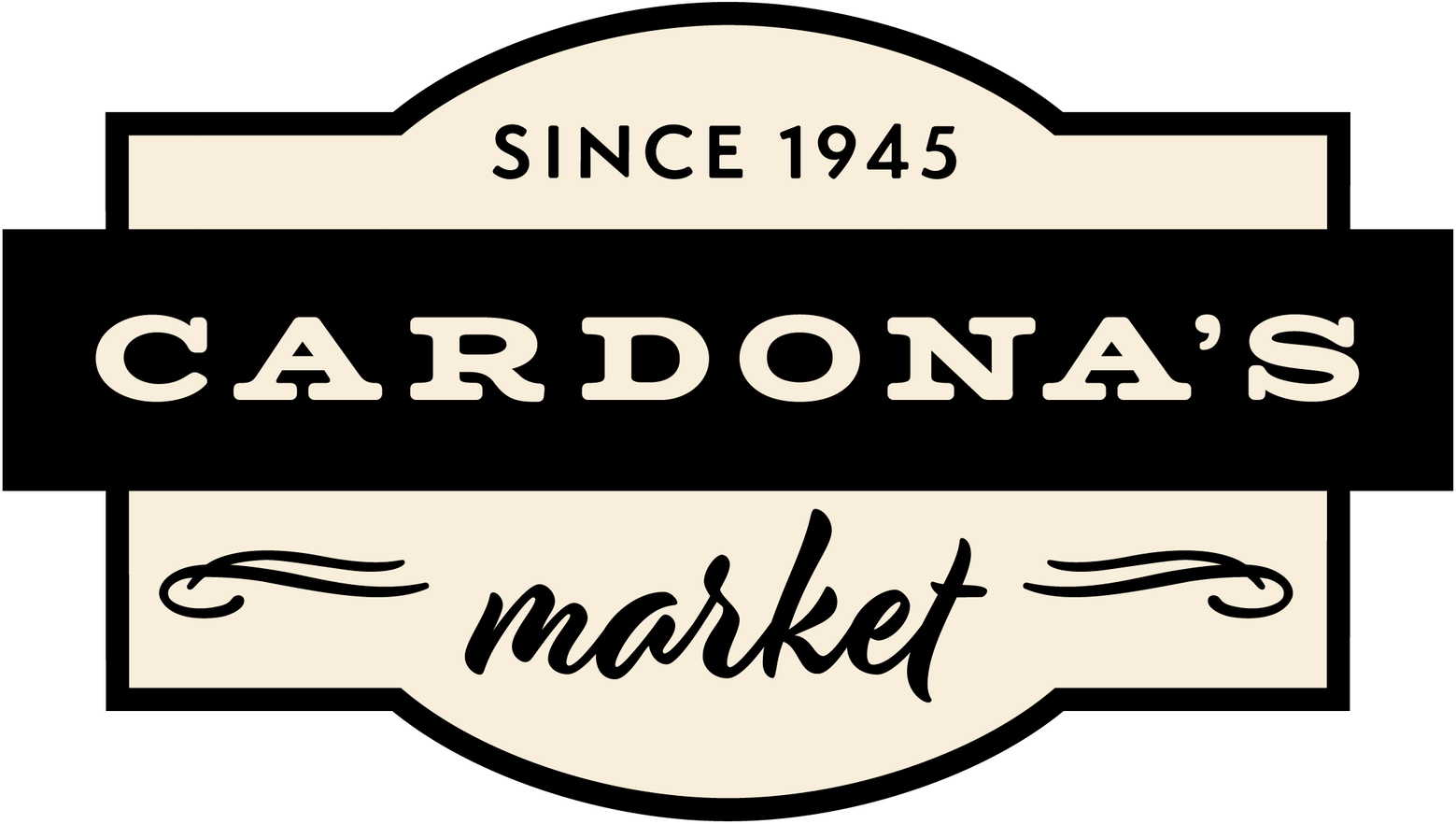Italian Antipasto 101

Antipasto is a traditional Italian appetizer that serves as the first course of a formal Italian meal. The term "antipasto" literally means "before the meal" in Italian, indicating its purpose to stimulate the appetite before the main course. This culinary tradition has its roots in ancient Rome and Greece, where it was seen as a prelude to the grand symphony of flavors that awaited diners.
Composition and Presentation:
Antipasto typically consists of a variety of small, bite-sized portions presented on a large platter from which guests serve themselves. The components of an antipasto platter can vary widely, but common ingredients include:
Cured Meats: Prosciutto, salami, capicola, and other Italian cold cuts
Cheeses: Mozzarella, provolone, Parmigiano-Reggiano, and other Italian cheeses
Vegetables: Olives, peperoncini, artichoke hearts, roasted red peppers, and marinated mushrooms
Seafood: Anchovies, sardines, and various seafood salads
Bread: Crostini, grissini (thin breadsticks), or sliced Italian bread
The presentation of antipasto is often visually appealing, with ingredients arranged in an aesthetically pleasing manner on the platter. This not only enhances the dining experience but also showcases the variety and quality of the ingredients.
Regional Variations:
The contents of an antipasto platter can vary significantly depending on the region of Italy. In southern Italy, saltwater fish and traditional cured meats like soppressata or 'nduja are popular. Northern Italian antipasti often feature different kinds of cured meats, mushrooms, and preparations of freshwater fish, especially near lakes.
Cultural Significance:
In Italy, antipasto is not typically eaten at home on a daily basis but is reserved for special occasions, romantic dinners, or restaurant dining. It is often accompanied by wine, creating a relaxed and friendly atmosphere for guests to socialize as the meal begins. This tradition has evolved over time, embracing flavors from different Mediterranean regions and becoming a cultural collage that reflects the rich history and heritage of the area.
The history and evolution of antipasto is a fascinating journey through Italian culinary traditions, spanning from ancient times to the present day. Here's an overview of how antipasto developed over time:
Ancient Origins:
Antipasto has its roots in ancient Roman and Greek civilizations. In these early days, a variety of appetizers were served before the main meal to stimulate the appetite. These early antipasti typically included olives, cheese, cured meats and vegetables.
The ancient Romans called this pre-meal ritual "promulsis," named after a common honey wine drink served at the start of a meal.
Medieval Period
During the Middle Ages, the tradition of antipasto largely disappeared from Italian meal structures. This was due to the influence of northern populations who ruled most of Italy and had a different approach to food compared to ancient Rome. At this time, meals often began with roasted, stuffed, or braised locally-sourced meats.
Renaissance Revival
The Renaissance period saw a revival and refinement of the antipasto tradition. Several factors contributed to this resurgence:
Urbanization and population growth between the 15th and 16th centuries
Decreased availability of fresh meat, leading to a rise in dry, transportable foods
Influence of early 'celebrity' chefs like Bartolomeo Scappi
During this era, antipasto evolved to include:
Elaborate and refined dishes
Luxury ingredients like truffles, saffron, and gold leaf
Creative plating techniques
Serving platters of 'finger foods' on a separate sideboard called a "credenza"
Regional Diversity
As antipasto spread throughout Italy, each region developed its unique interpretations and specialties. This regional diversity has contributed to the rich tapestry of antipasto dishes we see today. For example:
Coastal regions: Emphasis on seafood antipasti (marinated anchovies, octopus, mussels)
Inland areas: Focus on cured meats, cheeses, and vegetables
Northern Italy: Dairy-rich offerings, fresh figs, and polenta
Southern Italy: Bold flavors, seafood, and tomato-based dishes
Modern Antipasto
Today, antipasto remains an integral part of Italian dining culture. Modern antipasto platters typically feature:
An array of cured meats
Various cheeses
Olives
Marinated vegetables
Artisanal breads
Antipasto vs. Charcuterie
It's worth noting the distinction between antipasto and charcuterie, as the two are often confused. While both may contain cured meats, antipasto is a more diverse platter that includes cheeses, vegetables, and other complementary items. Charcuterie, on the other hand, is a French term that primarily focuses on a selection of cured meats.
Antipasto is more than just an appetizer; it's a beloved Italian tradition that sets the stage for a memorable dining experience. Its combination of flavors, textures, and colors not only stimulates the appetite but also provides a delightful way for diners to socialize and enjoy a variety of Italian delicacies before the main course.
Some of the top selling Antipasto items at Cardona’s are:
Cured Meats:
Prosciutto: Galloni Gold Label Prosciutto (20 months age)
Sopressata: Alps Hot or Sweet Sopressata (made in NY since 1928)
Cheeses:
Parmigiano Reggiano (24 or 60 month age):
Fontinella: Stella
Aged Provolone (aged in house): Grande (Domestic) or Auricchio (Imported)
Fresh Mozzarella: Grande or Belgioioso
Olives:
Assorted Line of Stuffed Sicilian Green Olives: w/ Garlic; w/ Provolone; w/ Prosciutto; w/ Sundried Tom; w/ Feta; w/ Gorgonzola
Calabrese
Jarred Vegetables:
Pastes & Spreads:
Hot Pepper Spreads: La Fede Sandwich Spread / Delizie di Calabria Bomba Spread
Sweet Spreads: Campo d’ Oro Pistachio Sweet Cream
At Cardona’s Market, customers can shop a wide selection of imported and local products to build their own antipasto platter. Cardona’s catering menu also features homemade antipasti platters in three different sizes, perfect for feeding small to large groups. Saluti!
